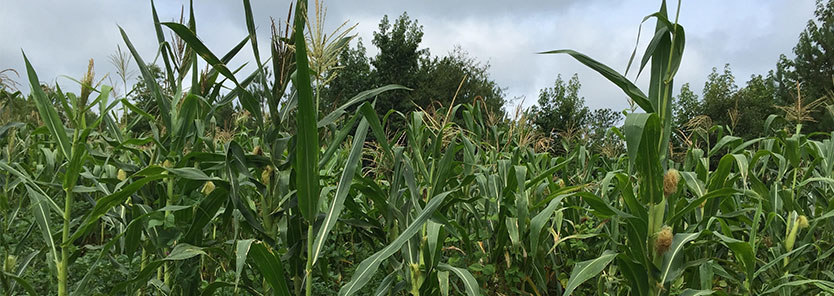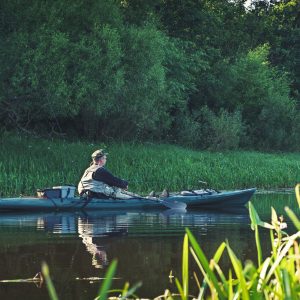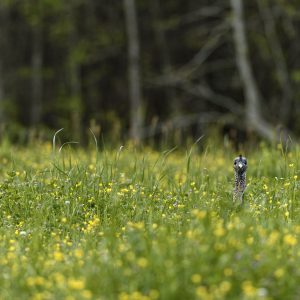Friends, we are going to talk about something new, different and exciting today! I’m not going to discuss soil PH or cultivating techniques. We all know these things are important and are the basics in “farming 101,” but we are going to approach a new and dynamic way of, not only planting food plots, but creating food plots that wildlife will be drawn to! What I’m saying is this… I’m going to throw a wrench in how you have raised food plots and what you have read about food plots. It’s called the three sisters approach. With that said, the way we have done it for so long is a proven way to support wildlife, but we are about to learn something new and different with proven results.
Several years ago I stood in a two acre field of old, Heirloom Hastings Prolific field corn I had planted and it was totally demolished by deer! Now this is what was interesting – close by there was a small block of Roundup Ready corn that lay untouched. Why? Now after the Hastings was gone, the deer moved to the GMO corn.
I repeated this experiment the following year using an old variety of field corn called Bloody Butcher. A friend down the road planted Roundup Ready corn and the same thing happened – the Bloody Butcher was devoured, and the GMO corn was untouched until my corn was gone. Why? The only reason I could presume-was the taste was better due to the fact that some heirloom corn has a higher level of protein compared to modern corn. Old heirloom blue corn can have up to 18% more protein than modern GMO corn. Now I am not demonizing GMO corn, I am just telling you what I and others have observed for a while.
The next spring I planted a new kind of food plot. I used the corn experiment, but added something else. I planted a mixture of heirloom seeds containing field corn, climbing beans, peas, and running squash.
Here is what happens – the corn provides winter food; the climbing beans and peas provide summer forage in the leaves and fall/winter food with any dried pods that may be left. The peas and the climbing beans, which ascend the corn stalks, both take atmospheric nitrogen from the air and fix it to the soil through nodules on their roots. The running squash spreads, shading the ground, not only improving moisture levels, but also providing weed control.
Does this technique sound new? Well it’s actually hundreds of years old. Native Americans called it the “Three Sisters,” which in their case was corn, beans, and squash. In our case we have added peas to the mix.
So now, you are scratching your head asking, “What does all of this have to do with food plots?” This is key – wildlife loves the “Three Sisters” way of farming! There is not only a long-term source of food, but a very attractive source of cover! It provides for a great dove field, fantastic turkey habitat and deer feel safe in the cover. But there is also something else – for the first time in a long time, we have a covey of quail in the two food plots of “Three Sisters.” We see more wildlife and more small game, including rabbits, in and around this ancient farming program.
Let’s talk about how to manage the ‘Three Sisters’ in the spring, and what to do in the fall. Make no mistake; the second part of this food plot (in the fall) is vital!! In the spring, apply 300 pounds of 13-13-13 per acre and disk it in. Plant the following heirloom mixture per acre by broadcasting:
- 5 lbs. Heirloom Field Corn
- 5 lbs. Climbing Beans
- 5 lbs. Peas
- 3 lbs. Squash
I use Heirloom Hastings Prolific, Jimmy Red, or Bloody Butcher corn. Trucker’s Favorite and others will also work well. Rattlesnake beans work great, as well as Pinkeye Purple Hull peas.
For the squash I use the running Butternut variety. Now here is the great part – all of these are Heirloom, non-GMO garden seed! These varieties feed both man and wildlife. You see, you can eat it too!
The following is important; when the corn is knee high, you must apply a second application of fertilizer. I broadcast 200 to 300 pounds of 13-13-13 or 150-200 pounds of ammonium nitrate per acre. Remember, corn loves nitrogen! If you don’t do this, you will have small, or sometimes no ears of corn.
Now here comes step two. In August your spring mix will look like a jungle, but this is what you want! Mow even strips or lanes in the field 5 to10 yards wide. Disk this in and let it decay. Now you have “green manure!” This process produces not only nitrogen, but a large boost in organic material. Come back in four weeks, disk and plant these strips with your fall food plot mix. It’s important to point out that the timing may be several weeks earlier in the far north.
Now you have green lanes of new food mixed with a dried of jungle of “Three Sisters” with winter corn. While this is totally foreign to what most gamekeepers have done in the past, deer feel more at ease in this “dirty field,” compared to a perfect and manicured, green food plot. There is a great food source avail-able, as well as fantastic cover. There will be spots and areas you cannot see, but that’s just fine, because there will be areas that deer cannot see you!
I believe that raising food plots is more than just a solid field of green. With saying this, the “Three Sisters” is not for everyone. It may work well here in Alabama, but not so well in certain regions, however, I believe it is worth looking into.
Let me say again, I am not demonizing GMO corn. I spent 30 years in sales and management with Helena Chemical, one of the nation’s largest Ag companies. I was a certified crop advisor. After retiring from Helena, I became the national sales manager for a major food plot seed company. Today I pastor a Methodist church and raise Heirloom corn. The “Three Sisters” mix is ancient, but is new for most wildlife food plots. There is definitely something working here – it could be the Heirloom food source, it could be the cover, even the “dirty fields” during the winter.
Now you are either interested, or think I’ve had too many concussions! I’m going to let you be the judge. Pick one of your food plots, plant the Three Sisters pro-gram. Come back in the late summer or early fall and plant the green strips or lanes.
There is something else to think about, I want to challenge you to provide a small quantity of food for your family. You already do this with venison, but now there is a large garden at your fingertips. I want to encourage you to raise a portion of this field for consumption for you and your family. Get into the practice of raising a garden in your food plots producing heirloom corn, beans, peas, and squash. That’s how our forefathers did it! Pick beans off your corn stalks like your great grandparents did. You can never tell – it can come in handy. Does it attract wildlife? You better believe it! It will provide food for both man and wildlife. It has for our family.






